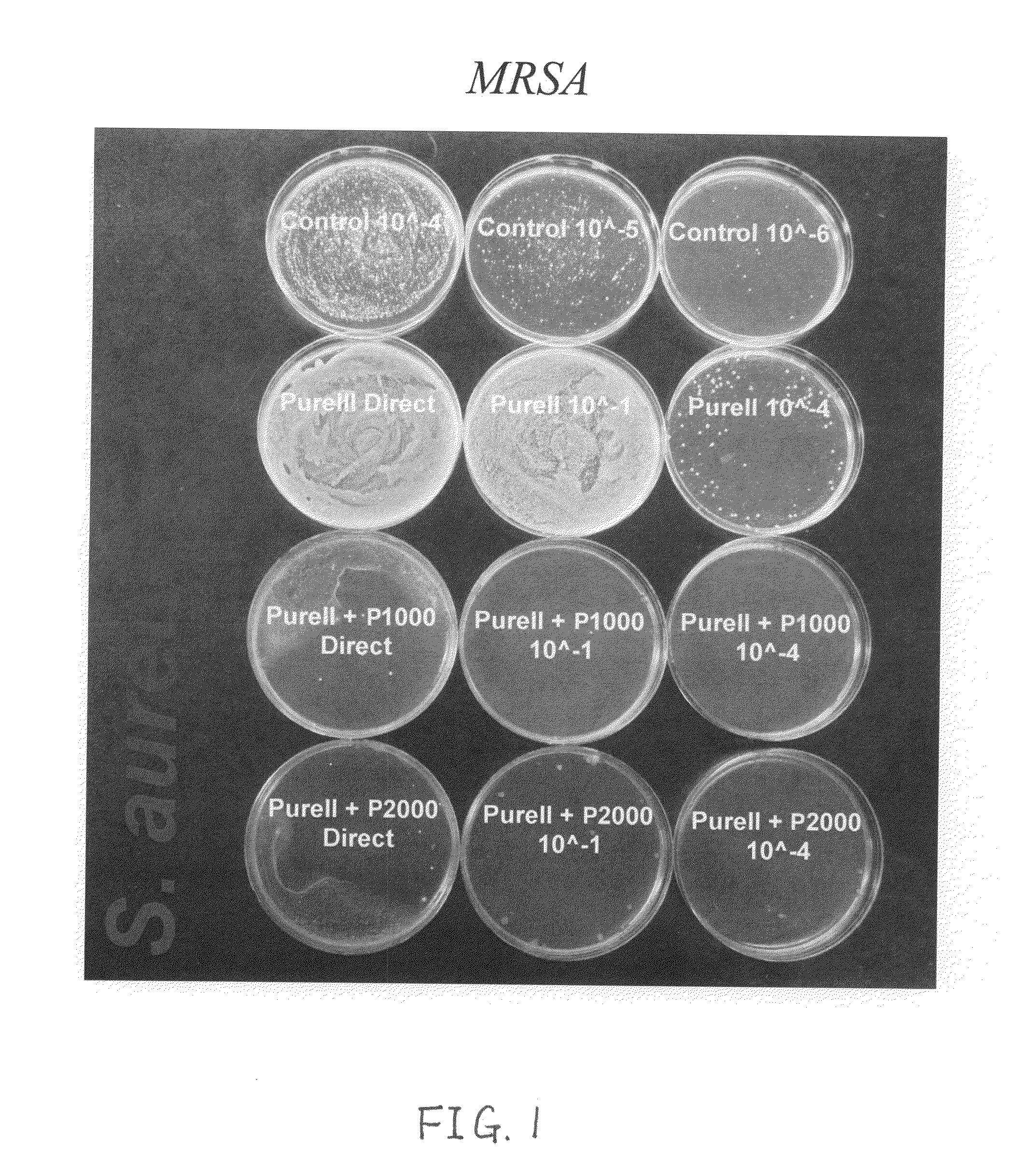Anti-infection P-compound™
a technology of anti-infection and p-compound, which is applied in the direction of antibacterial agents, biocide, plant/algae/fungi/lichens ingredients, etc., can solve the problems of antibiotic-resistant infections imposing greater costs, mutated bacteria and virus microorganisms are sources of rapidly mounting serious infections throughout the world, and costing the health care system an extra $830 million to $9.7 billion, so as to improve the efficacy and prolong the treatment stability
- Summary
- Abstract
- Description
- Claims
- Application Information
AI Technical Summary
Benefits of technology
Problems solved by technology
Method used
Image
Examples
Embodiment Construction
[0027]
P COMPOUND EXTRACT SOURCEBOTANICAL NAMES:TEACamellia Sinensis, UnfermentedROOIBOSAspalathus linearisYERBA MATE (MATE)Ilex ParaguayensisAPPEARANCE:Brown PowderTASTE:Bitter / AstringentWATER SOLUBILITY:SolubleCOMMON NAME:Tea ExtractPOLYPHENOL CONTENT:Minimum 74%CATECHIN CONTENT:Minimum 50%EGCG CONTENT:Minimum 24%MICROBIOLOGICAL DATA:YEASTMax 100 cfu / gramMOLDMax 100 cfu / gramTOTAL PLATE COUNTMax 1000 cfu / gramE. ColiNegativeSTORAGE:Ambient temperature; avoid moisture.
P Compound Extraction Process:
[0028]Raw materials from Camellia Sinensis, Rooibos, and Yerbe Mate were suspended in hot water (80° C.), P Compound were extracted according the following steps: Extraction - - - Filtration - - - Cooling - - - Concentration - - - Cooling - - - Extracted by Ethyl Acetate - - - Concentrating the liquor with Centrifugation - - - Spraying and drying - - - Sifting and blending
P Compound Anti-Infection Effects:
[0029]Clinical product testing was performed under the auspices of an independent micro...
PUM
 Login to View More
Login to View More Abstract
Description
Claims
Application Information
 Login to View More
Login to View More - R&D
- Intellectual Property
- Life Sciences
- Materials
- Tech Scout
- Unparalleled Data Quality
- Higher Quality Content
- 60% Fewer Hallucinations
Browse by: Latest US Patents, China's latest patents, Technical Efficacy Thesaurus, Application Domain, Technology Topic, Popular Technical Reports.
© 2025 PatSnap. All rights reserved.Legal|Privacy policy|Modern Slavery Act Transparency Statement|Sitemap|About US| Contact US: help@patsnap.com



